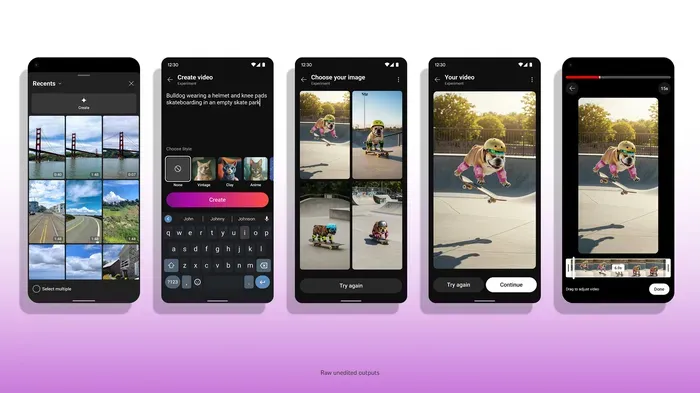Marketing and sales alignment is vital in B2B, as crucial as the collaboration between marketing and IT. Harmonizing these departments is imperative for achieving optimal results for sales and marketing leaders.
In this article, we will explore the significance of marketing and sales alignment for business success, discuss the benefits of alignment, such as increased revenue, enhanced customer experience, and efficient operations, and provide actionable strategies to ensure your organization operates cohesively.
Building a collaborative environment
Establishing a collaborative environment is fundamental for marketing and sales alignment. A shared sense of purpose and mutual respect can bridge the gaps between these departments. A workplace where both teams feel valued and supported fosters trust and boosts overall performance.
Developing a service level agreement (SLA) is one way to stimulate collaboration. An SLA clarifies expectations, outlines roles and responsibilities, and sets key performance indicators (KPIs) that both teams can strive towards. This promotes accountability and simplifies expectation management.
Frequent check-ins enable both teams to communicate openly, exchange insights and data, address challenges, and realign goals and strategies. This continuous dialogue facilitates improvement and fortifies the relationship between marketing and sales.
Aligning on the buyer’s and workforce’s Journey
Synchronizing marketing and sales efforts around the buyer’s and workforce’s journeys is crucial for delivering outstanding customer experiences. This shared understanding allows for identifying key touchpoints where marketing and sales teams can collaborate, providing a consistent experience for prospects and customers while addressing the needs and concerns of the employees serving them. Considering both aspects, you can craft a seamless experience for prospects, customers, and your internal team, resulting in higher conversion rates and a more unified organization.
Developing detailed buyer and workforce personas is an effective way to understand and target the right audience and shape your internal culture. Marketing and sales teams can pinpoint their ideal customers’ common characteristics, pain points, and motivations, crafting personalized and relevant messaging that resonates with prospects. Simultaneously, comprehending your workforce’s personas enables you to cultivate an environment that promotes employee growth, engagement, and satisfaction.
Streamlining processes and leveraging technology
Optimizing processes and employing technology can significantly enhance the efficiency and effectiveness of marketing and sales teams. Adopting the appropriate tools and implementing well-defined processes empower both teams to collaborate more seamlessly, ultimately driving exceptional customer experiences.
Defining the lead qualification and scoring process is a critical area to address. Establishing the criteria for qualifying leads enables marketing teams to pass high-quality prospects to sales, saving time and increasing the chances of closing deals. Sales teams can then prioritize leads based on their likelihood to convert, ensuring their efforts are focused on the most promising prospects.
Implementing CRM and marketing automation tools is essential for keeping both teams organized, sharing information effectively, and maintaining alignment on their goals and strategies. Integrating these tools into workflows streamlines processes enhances communication, and fosters collaboration.
Measuring and analyzing shared key performance indicators (KPIs) is crucial for understanding the effectiveness of the strategies in place. Regularly tracking these metrics allows both teams to identify areas for improvement, adjust their tactics accordingly, and ensure their efforts are aligned and focused on delivering the best possible customer experiences.
Crafting consistent messaging and content
A consistent and coherent brand story is vital for building trust and resonating with your target audience. Sales and marketing teams play a crucial role in shaping this narrative by aligning their messaging and collaborating on content creation.
Both teams should collaborate to ensure their messaging is consistent across all channels, including emails, social media, website content, and other touchpoints where prospects and customers interact with the brand. Maintaining a cohesive and compelling brand story can create a solid and memorable impression that sets you apart from the competition.
Sales and marketing teams should also join forces in content creation. Collaborating on developing relevant and engaging content enables both groups to leverage their unique insights and expertise better to address their target audience’s needs and pain points. This not only helps to nurture leads but also aids in closing sales and fostering long-term relationships with customers.
Lastly, it’s essential to encourage a culture of feedback and continuous improvement. By maintaining an open line of communication, marketing and sales teams can learn from each other’s experiences, adapt to new challenges, and continually refine their approach to deliver the most remarkable customer experiences possible. Regularly reviewing and updating strategies ensures that both departments remain aligned and focused on achieving their shared goals.
The key to marketing and sales alignment
Marketing and sales alignment drive business success and create remarkable customer experiences. By fostering a collaborative environment, aligning efforts around the buyer’s journey, streamlining processes through technology, and maintaining consistent messaging and content, mid-market and enterprise sales and marketing leaders in B2B companies can achieve better results and drive growth. Implementing the strategies outlined in this article will equip your teams to face the challenges of today’s competitive landscape and deliver an exceptional customer experience.
Get MarTech! Daily. Free. In your inbox.
Opinions expressed in this article are those of the guest author and not necessarily MarTech. Staff authors are listed here.




























































![6 Essential Ingredients for Winning Ads [Infographic] 6 Essential Ingredients for Winning Ads [Infographic]](https://imgproxy.divecdn.com/uTNt2ASUWhVsKl22uIAMtoyUXTeSV_b9Sst3p7mB1gg/g:ce/rs:fit:770:435/Z3M6Ly9kaXZlc2l0ZS1zdG9yYWdlL2RpdmVpbWFnZS82X2FkX2VsZW1lbnRzXzIucG5n.webp)











